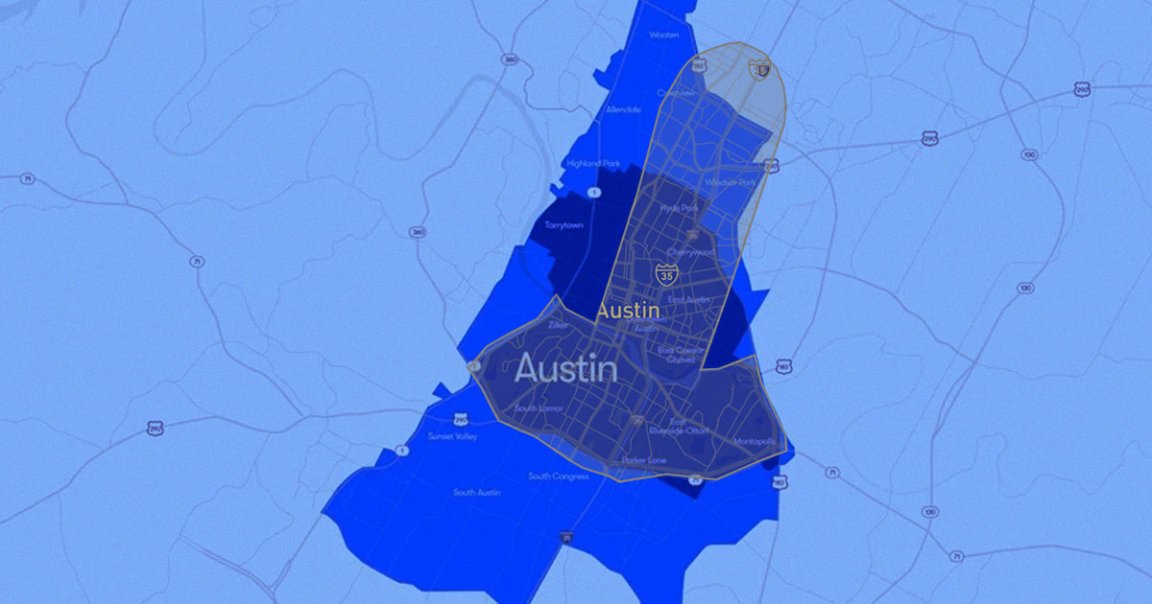
Measuring Contest
Tesla CEO Elon Musk’s infatuation with low-brow humor and dad jokes — including horrendously inappropriate gags about the Holocaust — is a pretty well-known thing.
Earlier this week, for instance, the billionaire’s EV firm posted a picture of the expanded service area of its robotaxi service, which firmly resembled the shape of male genitalia.
“Harder, Better, Faster, Stronger,” the company wrote in a tongue-in-cheek caption.
“Bigger, longer, and uncut,” Musk added, childishly and redundantly.
Tesla’s service area appeared to be slightly larger than its fiercest competitor’s, Alphabet’s Waymo, which also runs an autonomous ridehailing service in the city.
But Waymo didn’t rest on its laurels. On Thursday, the company countered Musk’s dick joke expansion by unveiling its own, even bigger map — covering some 90 square miles of the Texas city, a major step up from just 37 square miles.
While the two companies do appear to be in a bizarre “service area” measuring contest, Waymo didn’t go with a phallic shape, opting instead for a far more logical boundary, determined by major thoroughfares.
Besides the juvenile humor, Waymo’s counterattack highlights growing competition in an industry that hasn’t seen much of it to date. Waymo has established itself as the robotaxi service to beat, with little in the way of other companies coming for its bottom line. General Motors’ robotaxi company, Cruise, crashed and burned last year, imploding into an extremely costly footnote for the US carmaker.
Big Fleet
It remains to be seen how Waymo or Tesla will fare — or if there even is a lucrative future for taxis that drive themselves. The former’s fleet has already caused plenty of mayhem on public streets in several US cities, while the latter’s June launch has already been mired in technical issues and terrifying close calls.
Despite the growing pains, Waymo is firmly in the front seat when it comes to the scale of its operation. The company boasted earlier this week that it’s completed 100 million miles of fully autonomous driving. Its fleet is comprised of over 1,500 vehicles across five major urban areas across the country.
Tesla, on the other hand, has yet to get on the leaderboard. Its fleet of “ten to 12” robotaxis, which can only be hailed by a handpicked number of influencers, is still being accompanied by human safety drivers sitting in the passenger seat.
More on robotaxis: The Reason Tesla Is Failing Is That Elon Musk Is an Extremely Unlikeable Person